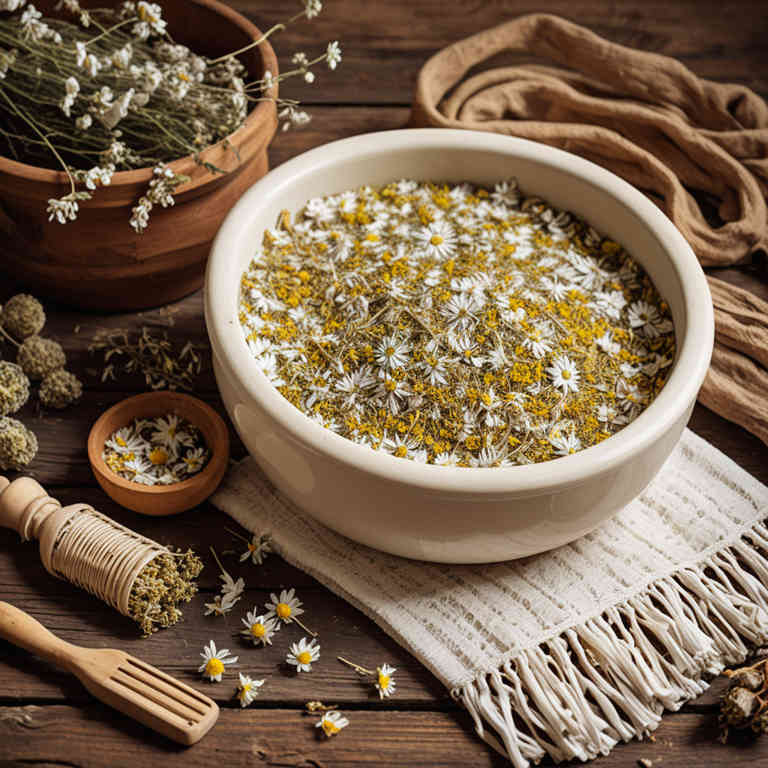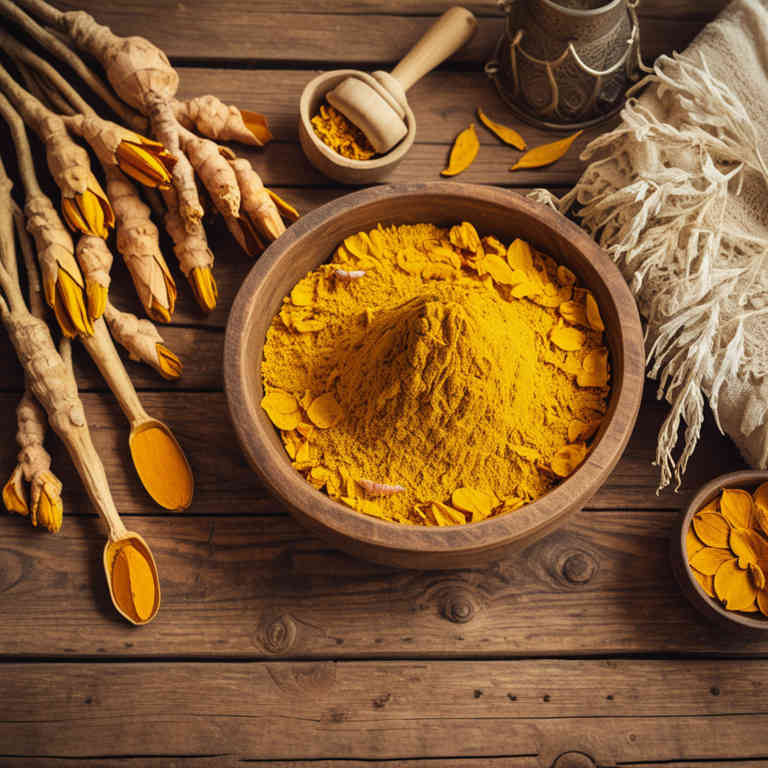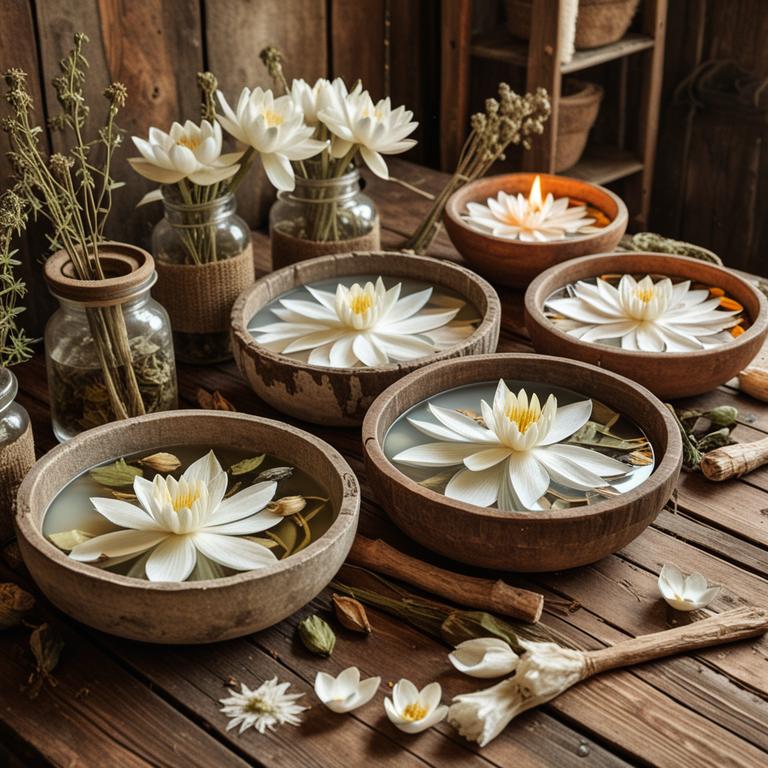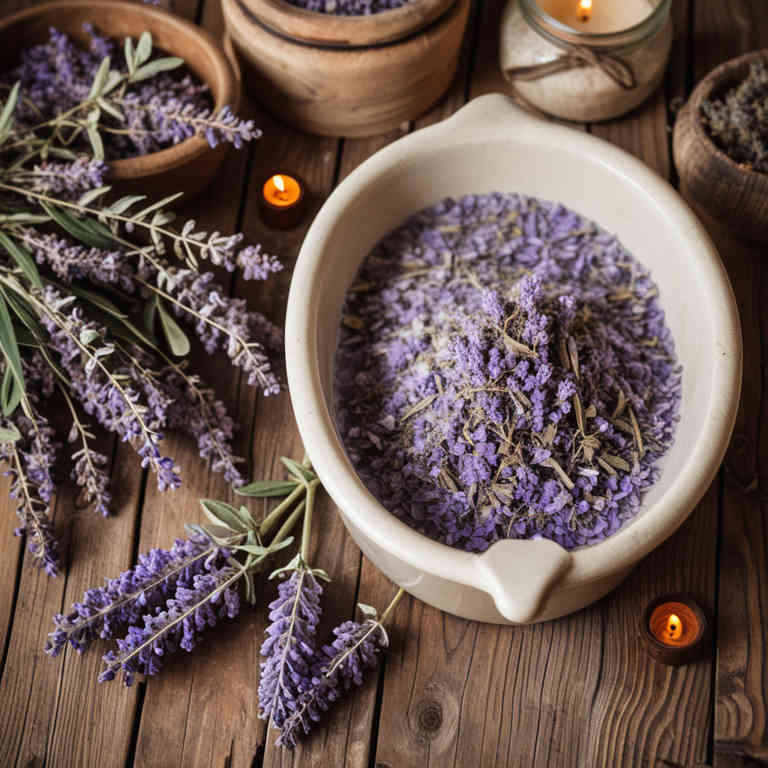10 Best Herbal Baths For Endometriosis Pain

Herbal baths can be a soothing and natural approach to managing endometriosis-related pain by promoting relaxation and reducing inflammation.
Certain herbs such as lavender, chamomile, and eucalyptus are known for their calming and anti-inflammatory properties, making them beneficial when infused into bath water. Soaking in a warm herbal bath can help ease muscle tension and improve blood circulation, which may alleviate discomfort associated with endometriosis. It is important to use safe, skin-friendly herbs and avoid any that may cause irritation or allergic reactions.
While herbal baths are not a cure, they can be a valuable complementary therapy when used alongside medical treatments under professional guidance.
FREE Herb Drying Checklist
How to make sure every batch retains maximum flavor, color, and aroma without the risk of mold or over-drying. Eliminate guesswork and trial-and-error, making herb drying faster, easier, and more efficient every time.
Table of Contents
1. Salvia officinalis

Salvia officinalis, commonly known as sage, has been traditionally used in herbal baths to alleviate symptoms of endometriosis, including pain and inflammation.
The essential oils and bioactive compounds in sage, such as rosmarinic acid and flavonoids, possess anti-inflammatory and analgesic properties that may help reduce pelvic discomfort. When used in warm water baths, sage can promote relaxation and improve blood circulation, supporting the body's natural healing processes. Some studies suggest that the aromatic compounds in sage may also have a calming effect on the nervous system, further easing pain perception.
However, while anecdotal evidence supports its use, more clinical research is needed to fully understand its efficacy and safety for managing endometriosis-related pain.
2. Urtica dioica

Urtica dioica, commonly known as stinging nettle, has been traditionally used in herbal baths to alleviate symptoms of endometriosis, including pain and inflammation.
The plant contains compounds such as histamine and formic acid, which can stimulate blood circulation and reduce inflammation when used in a bath. Herbal baths with stinging nettle are believed to help ease pelvic discomfort by promoting detoxification and improving lymphatic flow. However, it is important to note that while some individuals report relief, scientific evidence supporting its efficacy for endometriosis pain remains limited.
As with any complementary therapy, it is advisable to consult a healthcare professional before incorporating stinging nettle baths into a treatment plan.
3. Hypericum perforatum

Hypericum perforatum, commonly known as St. John's Wort, has been traditionally used in herbal baths to alleviate pain associated with endometriosis.
When infused into bath water, the active compounds in hypericum, such as hypericin and flavonoids, may help reduce inflammation and soothe pelvic discomfort. These baths are often recommended as a complementary therapy to support conventional treatments, offering a natural and calming approach to managing chronic pain. However, it is important to consult with a healthcare provider before using St. John's Wort, as it can interact with certain medications.
Despite its potential benefits, individual responses to herbal baths may vary, and consistency in use is often necessary to experience noticeable relief.
4. Chamomilla recutita

Chamomilla recutita, commonly known as chamomile, has been traditionally used for its calming and anti-inflammatory properties, making it a popular choice for herbal baths aimed at alleviating endometriosis-related pain.
When infused into warm water, chamomile baths can help reduce inflammation and soothe muscle tension in the pelvic region, offering natural relief from cramping and discomfort. The essential oils in chamomile, such as bisabolol and chamazulene, have demonstrated antispasmodic and analgesic effects, which may help ease the chronic pain associated with endometriosis. Regular use of chamomile baths can also promote relaxation and improve overall well-being, complementing other treatment approaches for endometriosis.
However, it is important to consult with a healthcare provider before incorporating herbal remedies into a pain management plan, especially for those with sensitive skin or existing medical conditions.
5. Curcuma longa

Curcuma longa, commonly known as turmeric, has been traditionally used for its anti-inflammatory and analgesic properties, making it a potential natural remedy for managing endometriosis-related pain.
When incorporated into herbal baths, curcuma longa may help reduce inflammation and soothe discomfort by promoting circulation and easing muscle tension in the pelvic region. The active compound in turmeric, curcumin, has been studied for its ability to inhibit inflammatory pathways, which could provide relief for women experiencing chronic pelvic pain. To use curcuma longa in a bath, it can be mixed with warm water and essential oils to enhance absorption and comfort.
While herbal baths may offer complementary relief, they should not replace medical advice or treatment, and it is important to consult a healthcare provider before incorporating them into a pain management plan.
6. Equisetum arvense

Equisetum arvense, commonly known as field horsetail, has been traditionally used in herbal baths to alleviate pain associated with endometriosis.
The plant is rich in silica and other minerals, which may help reduce inflammation and support tissue repair. When used in warm baths, the compounds in Equisetum arvense are believed to penetrate the skin and provide localized relief from cramping and discomfort. Some individuals report reduced menstrual pain and improved overall comfort after regular use of these baths.
However, it is important to consult with a healthcare provider before incorporating Equisetum arvense into a treatment regimen, as it may interact with certain medications or conditions.
7. Lavandula angustifolia

Lavandula angustifolia, commonly known as English lavender, has been traditionally used for its calming and soothing properties, making it a popular choice for herbal baths aimed at alleviating endometriosis-related pain.
When infused into bathwater, lavender essential oil or dried flowers can help reduce inflammation and ease muscle tension, which are common symptoms associated with endometriosis. The aromatic compounds in lavender may also promote relaxation and reduce stress, which can indirectly help manage chronic pain. While herbal baths are not a cure, they can serve as a complementary therapy to support overall well-being and pain management.
It is important to consult with a healthcare provider before incorporating lavender baths into a treatment plan for endometriosis.
8. Rosmarinus officinalis

Rosmarinus officinalis, commonly known as rosemary, has been traditionally used in herbal baths to alleviate symptoms associated with endometriosis, including pelvic pain and inflammation.
The essential oils derived from rosemary contain compounds like camphor and cineole, which possess anti-inflammatory and analgesic properties that may help reduce pain and discomfort. When used in warm water baths, rosemary can promote relaxation and improve blood circulation, potentially easing the tension in the pelvic region. However, it is important to dilute the essential oils properly to avoid skin irritation and to consult with a healthcare provider before incorporating rosemary baths into a treatment regimen.
While not a substitute for medical treatment, rosemary herbal baths may offer a complementary approach to managing endometriosis-related pain.
9. Nymphaea alba

Nymphaea alba, commonly known as the white water lily, has been traditionally used in herbal baths to alleviate symptoms associated with endometriosis, including pelvic pain and inflammation.
The plant contains compounds such as alkaloids and flavonoids, which possess anti-inflammatory and analgesic properties that may help reduce discomfort. Soaking in a bath infused with Nymphaea alba can promote relaxation and improve circulation, potentially easing the cramping and pain experienced by individuals with endometriosis. While it is not a cure, it may serve as a complementary therapy to support overall wellness.
As with any herbal remedy, it is advisable to consult with a healthcare provider before incorporating it into a treatment plan.
10. Vitex agnus-castus

Vitex agnus-castus, also known as chasteberry, has been traditionally used in herbal baths to alleviate symptoms associated with endometriosis, including pelvic pain and inflammation.
The herb is believed to support hormonal balance, which can help reduce the discomfort caused by hormonal fluctuations in endometriosis. When infused into bath water, vitex may promote relaxation and ease muscle tension in the pelvic region, offering a soothing and natural remedy. While scientific evidence is limited, many women report reduced pain and improved mood after using vitex baths as part of their self-care routine.
As with any herbal treatment, it is advisable to consult with a healthcare provider before incorporating vitex into a pain management plan for endometriosis.